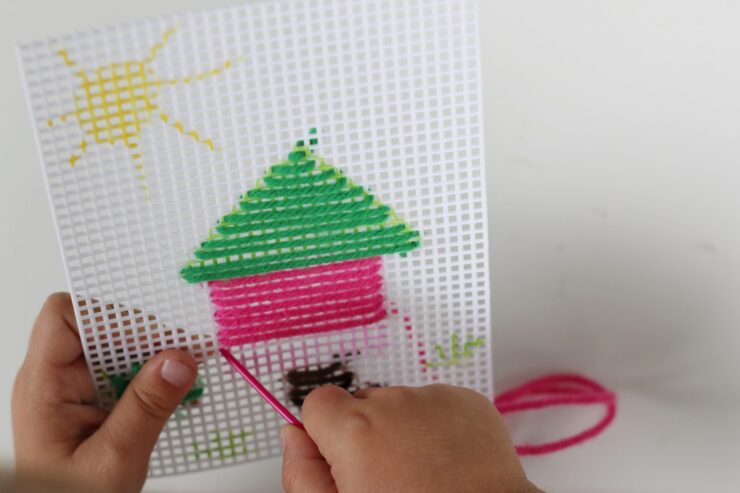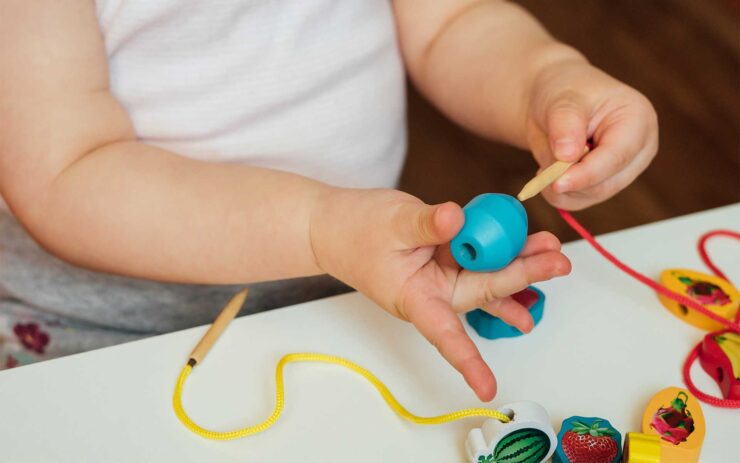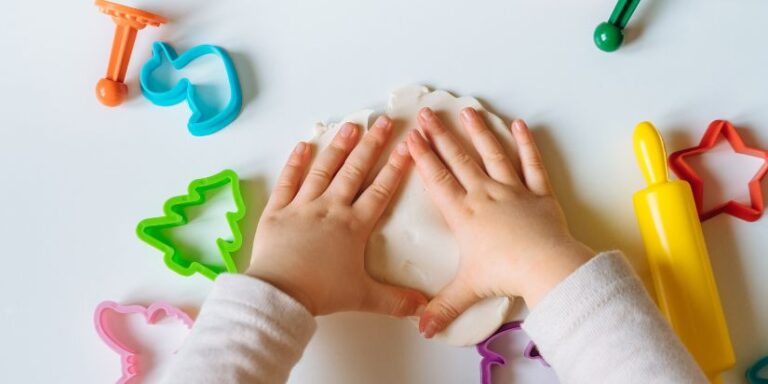Fine motor skills are essential for children’s overall development, impacting their ability to perform everyday tasks.
Engaging in activities that develop these skills enhances their hand-eye coordination, dexterity, and precision.
Let us list the top 7 activities that can help children with developing motor skills.
1. Peeling and Placing Stickers

Peeling and placing stickers is a simple yet highly effective activity for developing fine motor skills in children.
The activity encourages the use of the pincer grasp, which involves the coordination of the thumb and forefinger. It is a foundational movement that supports writing, buttoning clothes, and other daily tasks.
Children can be provided with a variety of stickers, ranging in size and shape, to peel off and place on a designated area such as a sticker book or a piece of paper.
This action requires them to use their fingers delicately and precisely, improving their hand-eye coordination. Additionally, by creating patterns or pictures with the stickers, children can engage their creativity and cognitive skills.
To keep the activity engaging, variations can be introduced. For example, using textured stickers can add a sensory dimension, enhancing the child’s tactile experience.
Setting challenges like completing a sticker puzzle or following a color pattern can also make the activity more stimulating and rewarding. The repetitive nature of peeling and placing stickers not only strengthens fine motor skills but also promotes concentration and perseverance.
2. Threading Activities

Threading activities are excellent for developing children’s fine motor skills, particularly in terms of hand-eye coordination and bilateral coordination. By threading Cheerios, beads, or pasta onto a string, pipe cleaner, or spaghetti strand, children learn to control their hand movements and improve their dexterity.
This activity requires children to use both hands simultaneously: one hand to hold the string and the other to thread the items. This bilateral coordination is crucial for tasks that involve using both sides of the body together, such as tying shoelaces or cutting with scissors.
As children master basic threading, the difficulty can be increased by using smaller beads or introducing threading patterns, which also enhances their cognitive skills. To add variety, threading activities can be paired with coloring pages.
Children can color themed pages and then create matching threaded jewelry or decorations, integrating both fine motor and artistic skills.
Threading activities can be made more diverse by varying the materials used. For instance, using colorful beads or pasta shapes can make the activity visually stimulating. Adding themes, such as threading beads in a sequence to create a necklace, can also add an element of fun and creativity.
These activities can be turned into social events where children work together to complete threading projects, fostering teamwork and communication skills.
3. Playing with Playdough or Dough
Playdough is a versatile tool that significantly aids in the development of fine motor skills. Manipulating playdough through rolling, flattening, cutting, and shaping activities strengthens hand muscles and improves finger dexterity. These skills are essential for writing, drawing, and other precise hand movements.
Children can be encouraged to create different shapes and figures using playdough, which stimulates their creativity and imagination.
Adding tools such as cookie cutters, rolling pins, and molds can make the activity more engaging and provide additional challenges. For instance, using a rolling pin to flatten the dough requires coordinated hand movements and control, further enhancing motor skills.
Playing with playdough also offers sensory benefits. The tactile experience of molding and shaping the dough can be soothing and therapeutic for children, helping to regulate their emotions and reduce stress.
The activity can be easily adapted for different age groups and skill levels by varying the complexity of the tasks. For younger children, simple tasks like rolling the dough into balls or snakes can be sufficient, while older children can be challenged to create more intricate designs or structures.
4. Cutting with Scissors
Using scissors is a critical skill that children need to develop as part of their fine motor skills repertoire.
Practicing cutting with child-safe scissors helps children improve their bilateral coordination, hand-eye coordination, and fine motor precision. These skills are vital for tasks such as writing, drawing, and crafting.
Children can start by cutting along straight lines on paper, gradually progressing to more complex shapes and pictures. This progression allows them to build confidence and competence with scissors.
To make the activity more engaging, children can be involved in simple crafts that require cutting and assembling, such as making paper chains, snowflakes, or collages. This not only enhances their cutting skills but also encourages creativity and artistic expression.
Using different types of paper, such as construction paper, tissue paper, or cardstock, can add variety and challenge to the activity.
Including cutting activities into themed projects, like holiday decorations or personalized greeting cards, can make the task more meaningful and enjoyable for children. Ensuring that scissors are appropriately sized for the child’s hands and providing close supervision will help create a safe and productive learning environment.
5. Sorting Small Objects
Sorting small objects is an excellent activity for developing fine motor skills, particularly the pincer grasp and hand strength.
By using tongs or tweezers to sort items like pompoms, marbles, or beads into containers, children practice precise hand movements and coordination.
This activity can be made more challenging and engaging by introducing different sorting criteria, such as color, size, or type of object.
Sorting by color, for instance, not only enhances fine motor skills but also reinforces color recognition and cognitive sorting abilities. Similarly, sorting by size or type adds a cognitive challenge, encouraging children to categorize and differentiate between items.
To keep the activity interesting, different tools can be used for sorting. For example, using tweezers requires more precision and control than using tongs, thereby increasing the difficulty level.
Adding themes or storylines, such as sorting “treasures” into different treasure chests, can make the activity more imaginative and engaging. This type of play not only develops fine motor skills but also promotes problem-solving, concentration, and perseverance.
The Bottom Line

Fine motor activities are crucial for children’s development, enhancing their hand-eye coordination, dexterity, and precision.
Add these activities into daily routines can be fun and beneficial. Explore more resources for additional fine motor activities and ideas.

